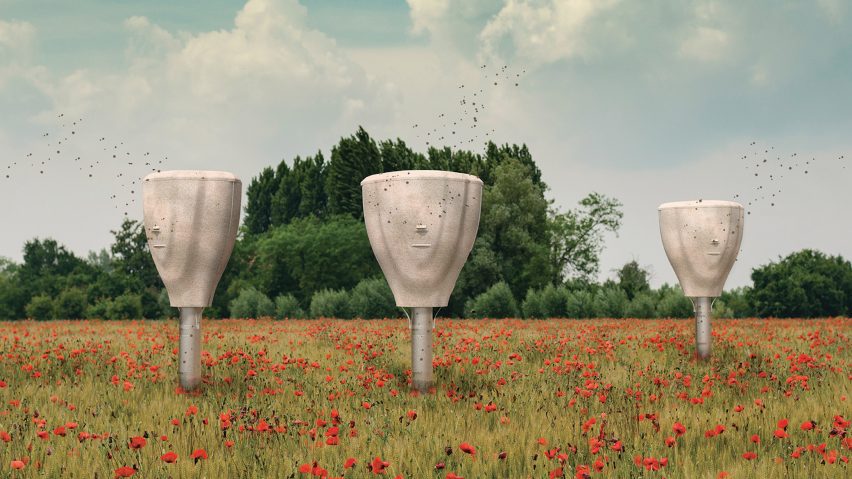
IED showcases 10 product and interior design student projects
Dezeen School Shows: an adaptive reuse scheme for disused urban rooftops and beehives made from mycelium are included in Dezeen's latest school show by students at IED Istituto Europeo di Design.
Also featured is a 3D-printed object made from a biodegradable material that can be used both as a chair and a personal work booth, as well as a pendant lamp designed to open and close like the petals of a flower.
IED Istituto Europeo di Design
Institution: IED Istituto Europeo di Design
School: Design School
Course: Product Design and Interior Design
School statement:
"IED Istituto Europeo di Design was born in Milan more than 50 years ago as an institution specialising in education and research in the design and communication fields.
"Nowadays, IED is an international network with 11 seats around Italy, Spain and Brazil, at which around 10,000 people from about 100 different countries study every year.
"IED forms a truly unique community mixing the local culture with an international environment, blending different experiences, people and cultures.
"The main aim is to train the new generation of designers providing them with the skills to respond to the demands of the current professional world.
"IED Design trains designers to be capable of anticipating and catering for the needs of society and individuals in their interaction with objects and spaces.
"The designer is by definition an innovator of forms and functions, an interpreter and, at the same time, a precursor of emerging aesthetic lines and of contemporary functional requirements.
"They need to respond to user needs as a basis for prototyping a product or service, as well as embrace new technologies enhancing interior spaces and urban design.
"The courses at IED Design are tailored to develop these gifts, while at the same time favouring the acquisition of extensive technical and design skills in the course of workshops and numerous active partnerships with leading industrial concerns."
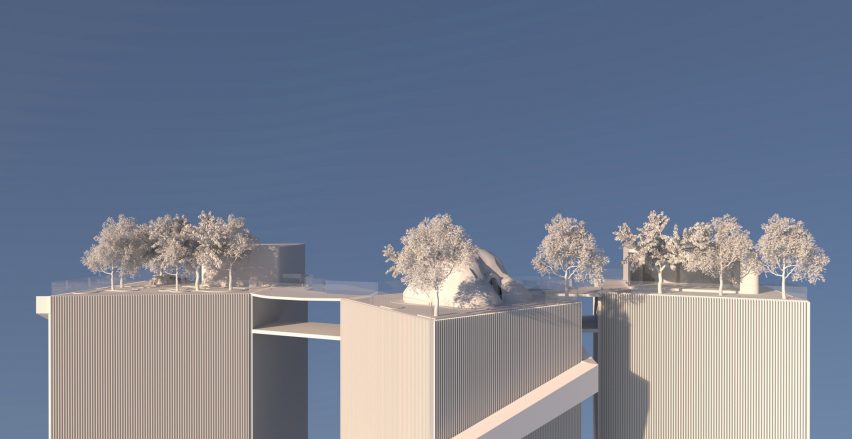
Head in the clouds by Bjarki Snær Smárason, Birta Rún Armannsdóttir, Cristina Chiono, Laura Kupka, Valentina Pogliani and Erica Giannoccaro
"With the support of Greenpeace, IED students were asked to develop and implement models and tools to promote and monitor the impacts of tourism and promote a new, more sustainable and dynamic tourism system.
"Projects were enriched by a cross-disciplinary programme combining interior design and communication design students from both IED Milano and IED Rome.
"Head in the Clouds reuses abandoned rooftops of buildings in Milan keeping in mind three dimensions – physical, nutritional and spiritual.
"Students created different spatial rooftops solutions for buildings located in the neighbourhoods of Manzoni, Citylife and Tortona, designing not only the new physical spaces but also the communication of the project to the Milanese people.
"The priority was to make green areas accessible to all and to develop abandoned places, giving them a new life to bring inhabitants and tourists together through inclusive activities."
Students: Bjarki Snær Smárason, Birta Rún Armannsdóttir, Cristina Chiono, Laura Kupka, Valentina Pogliani and Erica Giannoccaro
Course: Interior Design and Communication Design
Location: IED Milano and IED Roma
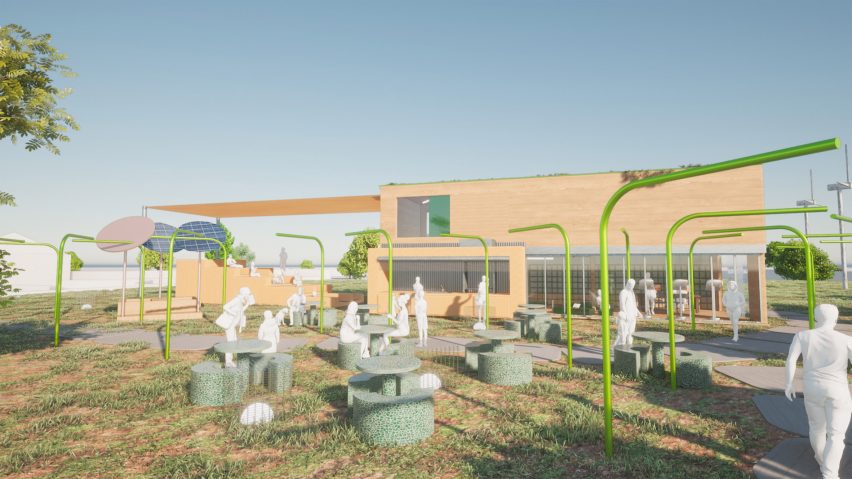
Centro de Ocio Cañada by Angela Polanco
"Based in the area of the Cañada Real Galiana in Madrid, Centro de Ocio Cañada (Leisure Center Cañada) is based on an investigation about the social exclusion suffered by certain populations that cause individuals to have a lack of motivation and opportunities.
"The answer the designer wanted to offer to the problem of social exclusion is to build a leisure centre with spaces that provide activities to meet the needs, desires and motivations of users and thus achieve personal satisfaction and a transformation of themselves and the environment.
"The project uses self-constructed structures in order to involve the citizens, create a sense of community and to make this space their own."
Student: Angela Polanco
Course: Interior Design
Location: IED Madrid
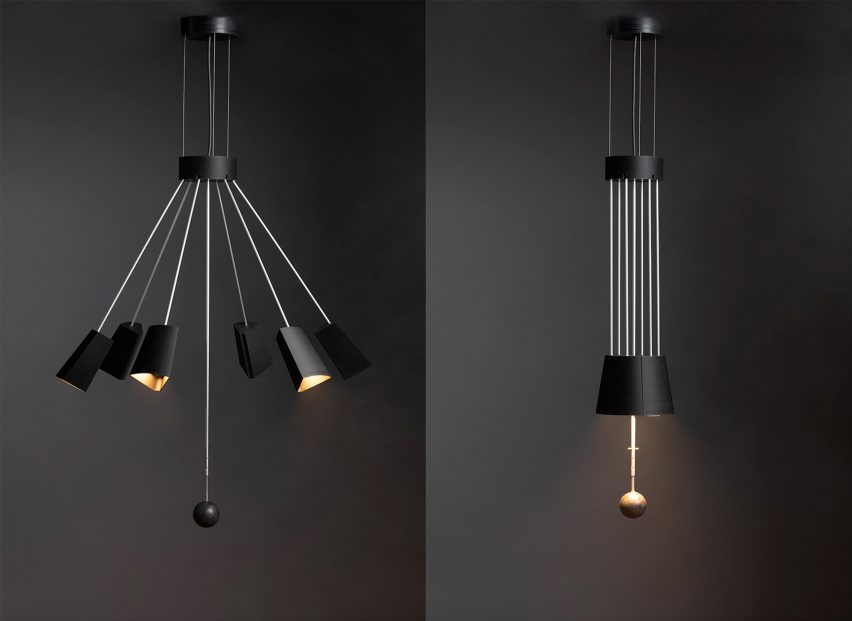
Ir-Radiante by Massimo Piovano and Marco Mascoli
"Ir-radiant is a pendant lamp with adjustable height. It has a strong component of interaction, with the user required to manually control a mechanism that opens the lamp.
"The second interactive component is the dimming of the light by manipulating a metal sphere.
"The aim was to create a product that opens in a way reminiscent of the blossoming of a flower at the arrival of spring."
Students: Massimo Piovano and Marco Mascoli
Course: Product Design
Location: IED Torino
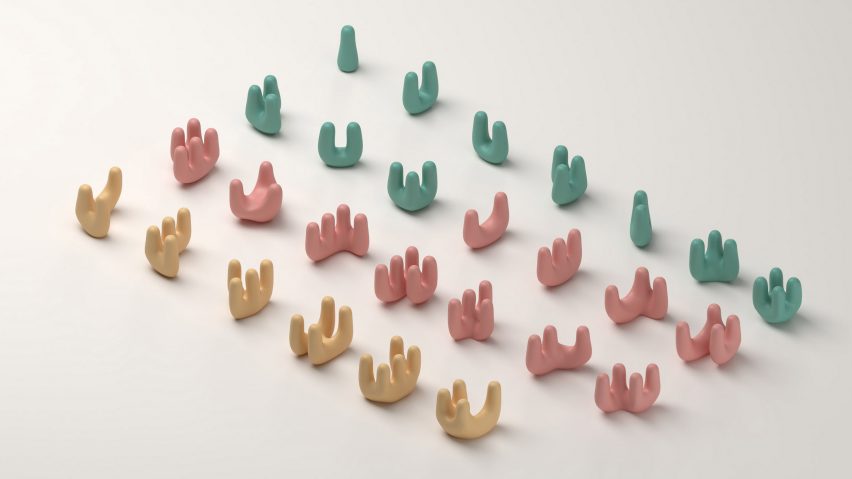
DÖT by Daniela Grisel Beizaga
"DÖT it is a language system based on the Braille alphabet and is made up of a series of organic and sensory objects that are read with the fingers of both hands – mainly with the index fingers – just like the Braille language.
"These move along the line from left to right recognising the different points of each object, providing geometric shapes with verbal meaning.
"DÖT also creates generated words through the union of specific objects, thanks to the system of embedded magnets inside each piece.
"The magnets are also a key guide for the correct positioning of the piece through the specific positioning of the poles, their approach or rejection between the pieces will indicate you.
"Blind people can use this medium to be able to teach the Braille alphabet to people that may potentially loose their vision."
Student: Daniela Grisel Beizaga
Course: Product Design
Location: IED Madrid
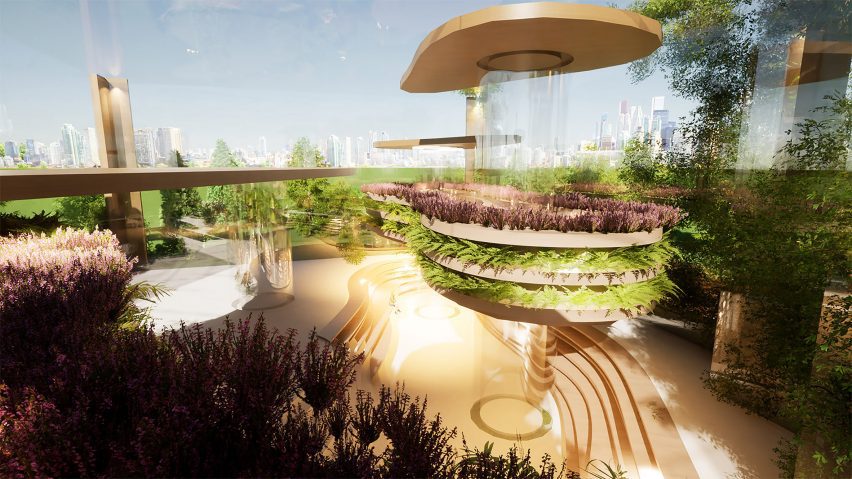
Midori by Daria Gorkun
"Midori is an ergonomic furniture system for the libraries of the future. It is conceived as sanctuaries of information, designed to promote learning through an atmosphere of calm and peace.
"To this end, the proposed design is based on organic and rounded shapes, as well as on the use of natural materials that fit perfectly into an environment that is turned towards nature.
"With a commitment to parametric design, the furniture considers the storage of physical and digital material and incorporates augmented reality technologies to allow it to be consulted."
Student: Daria Gorkun
Course: Product Design
Location: IED Barcelona
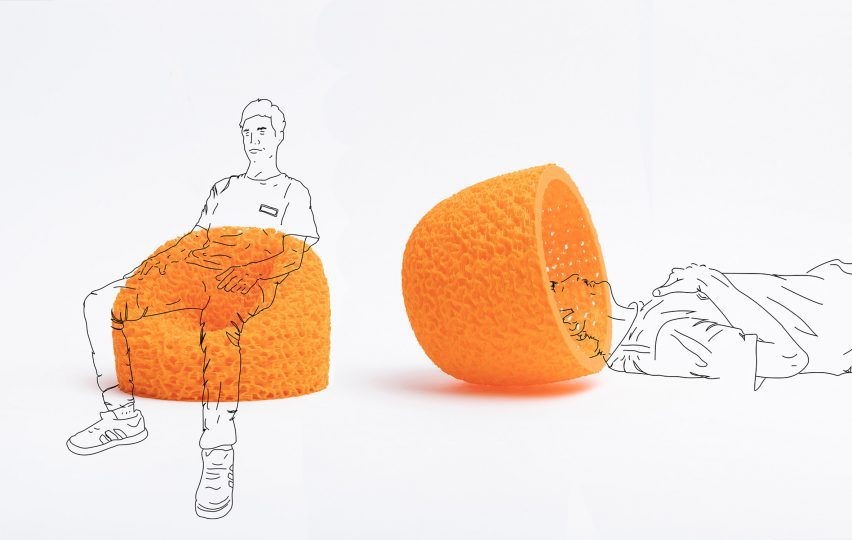
FundaMental by Conrado Scopinaro
"FundaMental is a seating system made of biodegradable and flexible material that can be adapted to different needs.
"It is made via 3D-printing and is designed for use in both indoor and outdoor spaces.
"It meets the needs of people who learn and work nomadically, who do not require a specific physical environment for their work or study.
"The product offers various functionalities, making it possible to create moments of conviviality as well as environments where one can find peace and quiet."
Student: Conrado Scopinaro
Course: Product Design
Location: IED Barcelona
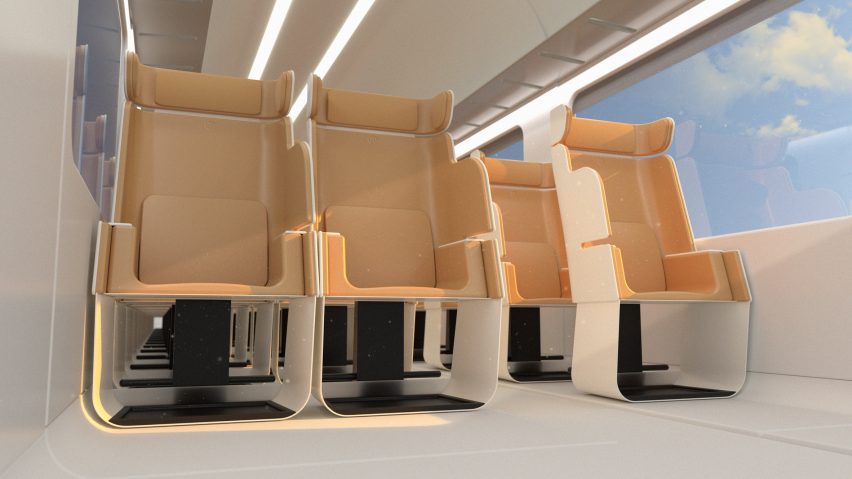
Clever by Alessandro Giraldi and Francesco Giroti
"Clever is a new seat designed for use on trains.
"It aims to contribute a solution to the important environmental challenges designers now face, by proposing a product that is capable of responding to new needs by promoting sustainable mobility and the circular economy.
"Clever was made in collaboration with Legambiente Onlus."
Students: Alessandro Giraldi and Francesco Giroti
Course: Product Design
Location: IED Rome
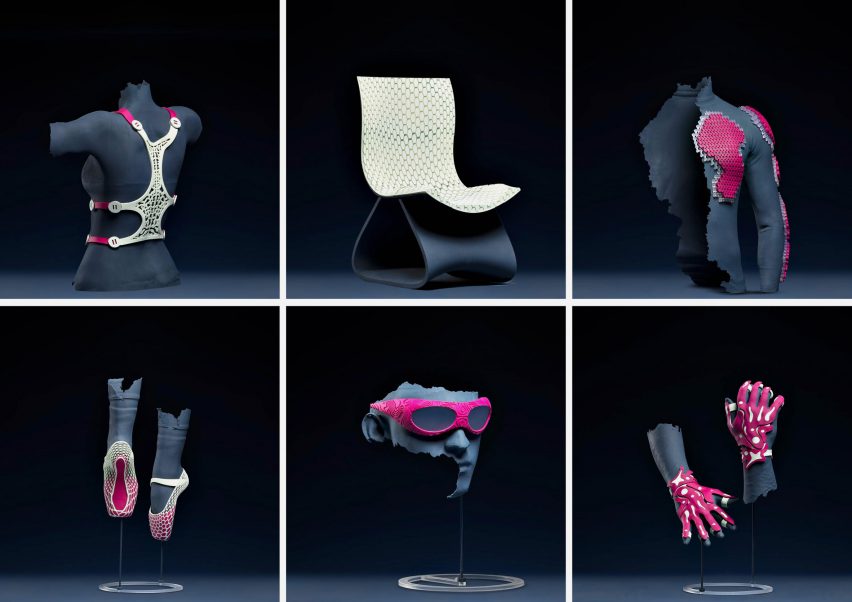
Design for each and all by Marica Argiento, Riccardo Pietrucci, Celilne Cialfi, Giovanni Sciarra, Gioia Palmiero, Francesco Carollo and Lorenzo Graziano
"Design for Each and All is a project from IED Rome in collaboration with Formlabs and 3DiTALY.
"The product design students were challenged to use 3D printing to create items that improve people's quality of life.
"The proposals include adaptive ballet shoes, chairs that mould to user's backs, protective gear for motorcyclists that adapt to specific body shapes and gloves for rehabilitative use."
Students: Marica Argiento, Riccardo Pietrucci, Celilne Cialfi, Giovanni Sciarra, Gioia Palmiero, Francesco Carollo and Lorenzo Graziano
Course: Product Design
Location: IED Rome
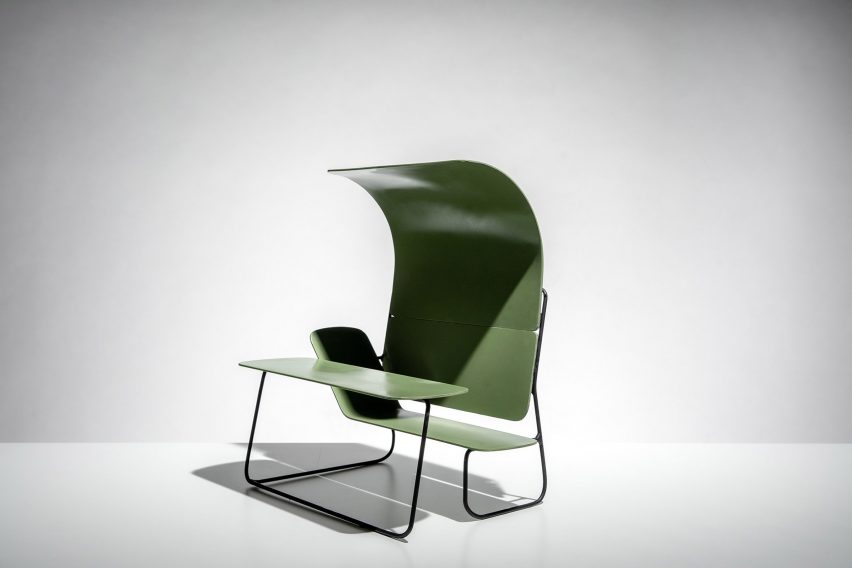
Wupen by Jing Chuan Yang
"Wupen is a range of office furniture designed for both indoor and outdoor use, which aims to take the user out of their routine environment to promote learning, socialisation, collaboration and communication.
"Technology gives people comfort, but it also makes us spend more and more time indoors and quite often sitting in chairs.
"Wupen frees employees from the confines of the workspace, and when people have more freedom to move their bodies, it tends to open their minds.
"It breaks down the hierarchy and norms in companies and allows everyone to communicate and collaborate better.
"Wupen also provides users with a peaceful shelter – when an individual or a team needs a quiet place to work or rest, it provides users with an environment that is isolated from the outside world but does not lock people in a closed space."
Student: Jing Chuan Yang
Course: Product Design
Location: IED Barcelona
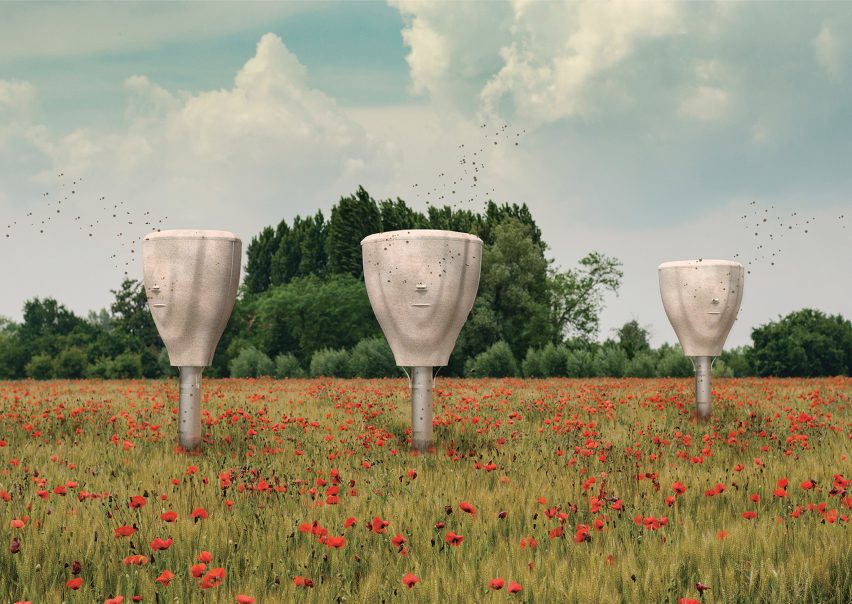
Swarmix by Edoardo Amato, Enrico Canella and Giacomo Pizzoni
"Through pollination, bees enable the majority of plant species to reproduce, meaning their disappearance would affect life on earth as a whole.
"This project wants to help the repopulation of bees via a three-part system – a beehive monitored by an internal sensor system, the beekeeper that will take care of the bees, and an interactive app.
"The beehives are designed based on a natural shape and are fabricated with mycelium, a material derived from fungi that has zero impact on the environment.
"The mycelium is an insulating material and water-repellent allowing allows bees to be protected the rain or cold during winter."
Student: Edoardo Amato, Enrico Canella and Giacomo Pizzoni
Course: Product Design
Location: IED Milano
Partnership content
This school show is a partnership between Dezeen and the IED Istituto Europeo di Design. Find out more about Dezeen partnership content here.